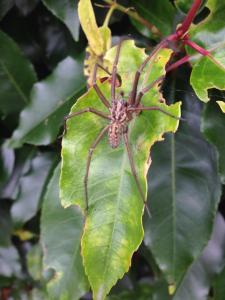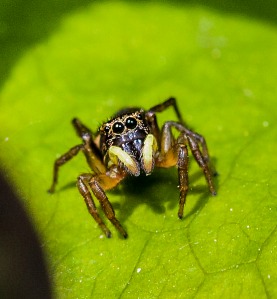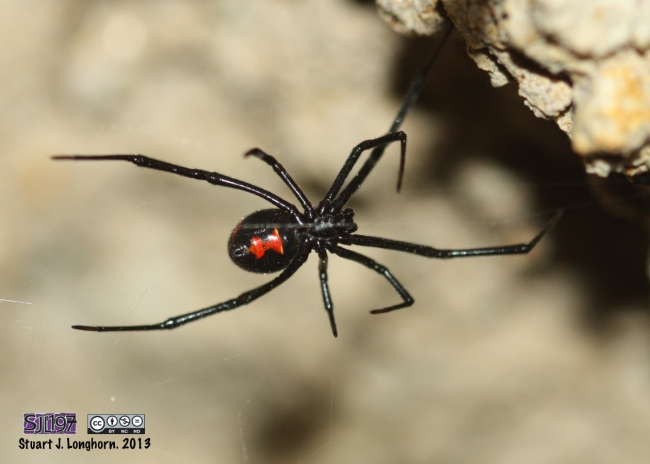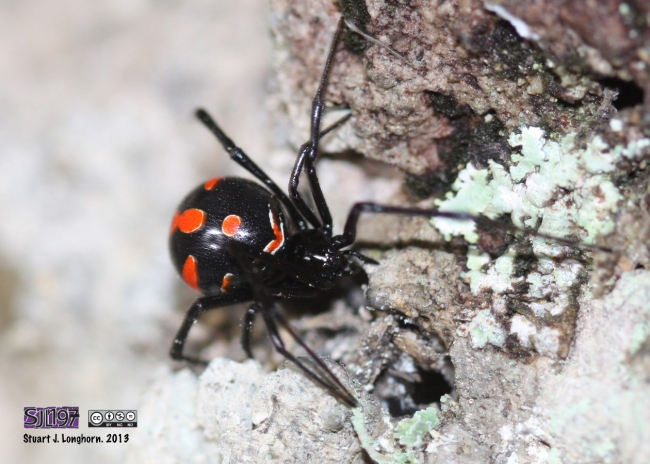There has been an awakening, have you felt it?
Sensationalist spider stories are appearing again, scurrilous gutter journalism designed to misinform and scare is cropping up and being disseminated by the ignorant. It’s ‘Spider Season’ again.
The Spiderlord is needed once more. The False widow panic may have abated but the tabloids are always ready to jump on a spider scare story and they are not discriminate when it comes to species.
Lets dissect a few headlines shall we? Today, courtesy of that lowest of rags, the Daily Star, we have:
The Spiderlord is needed once more. The False widow panic may have abated but the tabloids are always ready to jump on a spider scare story and they are not discriminate when it comes to species.
Lets dissect a few headlines shall we? Today, courtesy of that lowest of rags, the Daily Star, we have:
Cannibal spiders hit UK: Killer flesh-eating arachnids set to invade Britain's homes
MILLIONS of cannibal spiders with a monster appetite for flesh are set to swamp Britain.
That's on the website, and in print we have.....
Yep, that's right, they are talking about the cellar spider. Pholcus phalangioides.
Excuse me while I laugh, and follow along if you like, though it's paraphrased somewhat, if your familiar with a particular belligerent raccoon then you'll recognise this...
"HAHAHAHAHAAHA"
That's a fake laugh,
"It’s REAL!"
Totally fake
"That was the most real hysterical laugh of my entire laugh because Pholcus is not a threat!"
 |
| Not even spiders, well done morons! |
Let’s dispense for just one second with the fact that the article in question was ENTIRELY incapable of using the correct images for the article, instead using pictures of Opiliones (Harvestmen) , presumably as they all share the colloquial name ‘daddy longlegs’. And the editors/authors of these publications are clearly braindead imbeciles incapable of doing any research.
So the headline, Cannibal spiders.Most spiders will opportunistically prey upon other species. Its called nature. Killers? Well in the same way that the vast majority of animals upon this planet are killers in the name of survival yes. Flesh eating? Hardly, they have no interest in flesh as you and i would know it, instead sucking the juices out of their prey to leave a dessicated husk. And invade, surely the Star's favourite word when it comes to spiders. They CAN'T INVADE, THEY ARE ALREADY HERE. They have been all along and no one has cared.
Pholcus as a threat is one of the most ridiculous things that I have ever heard in my entire life. There is NO more shy, retiring and benign species that I can think of.
So the headline, Cannibal spiders.Most spiders will opportunistically prey upon other species. Its called nature. Killers? Well in the same way that the vast majority of animals upon this planet are killers in the name of survival yes. Flesh eating? Hardly, they have no interest in flesh as you and i would know it, instead sucking the juices out of their prey to leave a dessicated husk. And invade, surely the Star's favourite word when it comes to spiders. They CAN'T INVADE, THEY ARE ALREADY HERE. They have been all along and no one has cared.
Pholcus as a threat is one of the most ridiculous things that I have ever heard in my entire life. There is NO more shy, retiring and benign species that I can think of.
 |
| I actually think they are kind of cute. This is a male, as evidenced by the enlargened pedipalps. Looks like he has been in the wars a bit. |
As long as you aren’t another spider.
Yes these things are assassins extraordinaire and they are particularly good at taking down other arachnids, their long spindly legs enabling them to entangle and subdue spiders that you would normally think they would have no chance of capturing. Indeed, these particular spiders are the one species that are more or less guaranteed to eradicate any other spiders from your residence. For this very reason I tend to remove Pholcus from mine. They are THAT effective and I rather like all spiders. You’d think that the Daily Star and other such rags would be championing Pholcus phalangioides, shouting about them from the rooftops and heralding them as the second coming of Christ, the solution to all your spider ills and fears. Alas this is far from the case and the usual ignorance and willful misinformation abounds.
Yes these things are assassins extraordinaire and they are particularly good at taking down other arachnids, their long spindly legs enabling them to entangle and subdue spiders that you would normally think they would have no chance of capturing. Indeed, these particular spiders are the one species that are more or less guaranteed to eradicate any other spiders from your residence. For this very reason I tend to remove Pholcus from mine. They are THAT effective and I rather like all spiders. You’d think that the Daily Star and other such rags would be championing Pholcus phalangioides, shouting about them from the rooftops and heralding them as the second coming of Christ, the solution to all your spider ills and fears. Alas this is far from the case and the usual ignorance and willful misinformation abounds.
To be clear, most spiders are opportunistically cannibalistic with many species predating on other spiders, this is survival after all. Pholcus just happens to be outstandingly good at it. This does not just mean that they only eat spiders, they will also quite happily eat other small invertebrates and any escapee locusts that might jump off as I attempt to feed them to tarantulas will often end up as a Pholcus’s dinner. They are also remarkably prolific. And once you have them in your house they are a bit of a bother to get rid of totally.
Thankfully they are quite content to sit in a corner passively, chilling out. These are the spiders that result in having cobwebs in your corners and generally they barely move from their webs. At night they are more likely to take a wander in search of prey but fear not they will leave your sleeping form alone, much preferring to skulk in crevices and hunt out of sight. Again, if you are not a spider you have nothing to fear.
They are already all around you, you see. In your sofa, in the corners, behind furniture. Don't worry, they are entirely uninterested in you.
They are actually a pretty delicate species. Hardly robust, and spindly to the extreme, they are also far from the most photogenic of our spiders bearing little in the way of markings and being ungainly and plain. Usually you will see them either in a web in the corner (sometimes with eggsac like in the picture) or flat against a wall. Their eggsacs are interesting in that they are one of the few species that seems to take a minimal approach when it comes to wrapping the eggs in silk with the individual eggs being quite visible in the cluster, reminding me somewhat of that alien ship from Star Trek (the 60's one). If disturbed they will fall back upon pretty much their only defence mechanism other than scarpering, which is to spin in around in their web as fast as possible, becoming a blur, presumably to confuse and dissuade predators. It actually looks a bit silly. Think of it as a spider tantrum.
They are actually a pretty delicate species. Hardly robust, and spindly to the extreme, they are also far from the most photogenic of our spiders bearing little in the way of markings and being ungainly and plain. Usually you will see them either in a web in the corner (sometimes with eggsac like in the picture) or flat against a wall. Their eggsacs are interesting in that they are one of the few species that seems to take a minimal approach when it comes to wrapping the eggs in silk with the individual eggs being quite visible in the cluster, reminding me somewhat of that alien ship from Star Trek (the 60's one). If disturbed they will fall back upon pretty much their only defence mechanism other than scarpering, which is to spin in around in their web as fast as possible, becoming a blur, presumably to confuse and dissuade predators. It actually looks a bit silly. Think of it as a spider tantrum.
Oh and they are incapable of biting you. Literally cannot penetrate our skin, like the vast majority of British spiders. That story about them having the most potent venom but no fangs? Nonsense, an old wive's tale. Pay it no mind, they have fangs, just ask another spider. But they are too small to penetrate our skin. Simple as that.
So maybe not a lot to love but they are nonetheless a fascinating species. They are as far from a a threat as anything I could imagine and the idea that the paper uses them for its scaremongering sensationalist tripe of an article is laughable.
I'll be back to debunk another article soon,
So till then, keep calm and carry on, after all its only a spider.
all Pholcus images courtesy of Creative Commons Wikipedia.
So till then, keep calm and carry on, after all its only a spider.
all Pholcus images courtesy of Creative Commons Wikipedia.





























